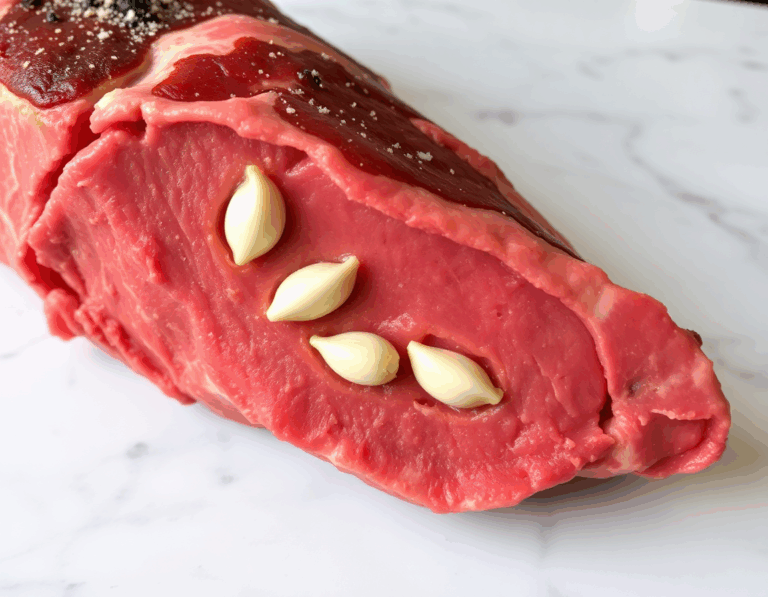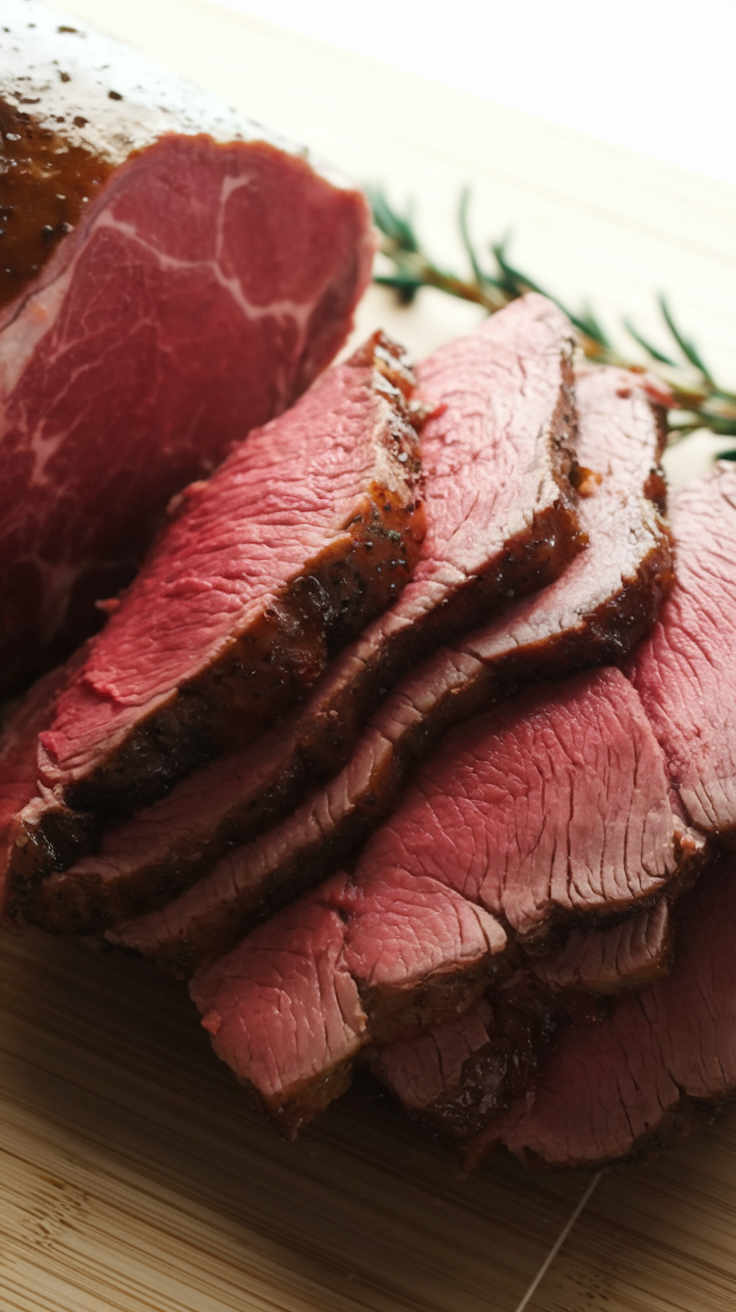There’s something about a perfectly cooked rump roast that feels like a warm hug on a chilly day. You know, it’s like the cozy sweater of dinners—simple yet deeply satisfying. I stumbled upon this recipe last winter, and it quickly became my go-to for Sunday family dinners, especially when paired with the comforting smells of rosemary and garlic wafting through the house.
Steps
- Take the rump roast out of the refrigerator two hours before cooking to let it warm up closer to room temperature. This helps the meat cook evenly.
- Use a sharp knife to make three deep slits on one side of the roast. Insert a garlic clove into each slit, and season with salt and pepper. Repeat on the other side and rub any remaining seasoning over the roast.
- Preheat your oven to 275°F. Melt salted butter in an oven-safe skillet over medium-high heat and sear the beef on all sides until it is evenly browned, which takes about 15 minutes.
- Remove the browned roast and deglaze the skillet with beef broth and red wine. Place the roast back into the pan along with sliced onions and rosemary sprigs.
- Roast in the oven until the internal temperature reaches 115°F, which should take around 12 to 15 minutes per pound. For a 4-pound roast, this is about 48 minutes to 1 hour.
- Once done, move the roast to a cutting board and loosely cover it with foil. Let it rest for 20 minutes until the temperature rises to 130°F for medium-rare or 125°F for rare before serving.
- While the beef rests, strain the pan juices for later use. If onions need more cooking, finish them on the stovetop. Use the juices to make gravy or serve as is with the beef for added flavor.

Ingredients
- 4 pounds of rump roast
- 6 cloves of garlic
- 2 tablespoons of sea salt
- 2 teaspoons of black pepper
- 2 tablespoons of salted butter
- ½ cup of beef broth
- ½ cup of dry red wine
- 1 large yellow onion, thinly sliced
- 2 sprigs of fresh rosemary
FAQ
- What is the ideal internal temperature for a rump roast?
- For a medium-rare roast, the ideal internal temperature should reach about 130°F after resting. If you prefer a rare roast, aim for an internal temperature of 125°F. It is not recommended to cook this cut of beef beyond medium-rare as it can become tough.
- How long should I let the rump roast rest after cooking?
- After removing the roast from the oven, it should rest on a cutting board covered loosely with foil for around 20 minutes. This allows the internal temperature to rise and ensures a juicy, tender result.
- What are some tips for searing the rump roast?
- Melt salted butter in an oven-safe skillet over medium-high heat before adding the beef. Sear each side until it is evenly browned, which should take about 15 minutes in total. This step is crucial for achieving a deep, flavorful crust.
- Can dried rosemary be used instead of fresh rosemary in this recipe?
- Yes, dried rosemary can be used if fresh is unavailable. For this recipe, two sprigs of fresh rosemary are equivalent to about ? teaspoon of dried rosemary.
- What can be done with the pan juices from the roast?
- The pan juices can be strained and used to make a gravy by adding a little cornstarch or flour. Alternatively, serve the juices “au jus” with the roast. The onions cooked with the roast can also be served with the juices, creating a dish reminiscent of French onion soup.
Tips
- Allow the rump roast to sit at room temperature for about two hours before cooking to ensure even cooking without leaving it out much longer than that.
- Use a meat thermometer to check the internal temperature of the roast, aiming for 115 F before resting, as relying on guesswork can lead to overcooked meat.
- After removing the roast from the oven, let it rest under a loose foil tent for about 20 minutes to allow the temperature to rise to 130 F, achieving a perfect medium-rare.
- Don’t waste the flavorful pan juices; use them to create a gravy with cornstarch or flour, or serve them as a savory au jus.
Equipment
- Oven-safe skillet (such as a cast iron pan)
- Meat thermometer

